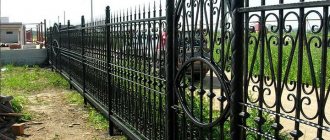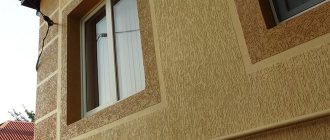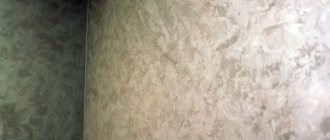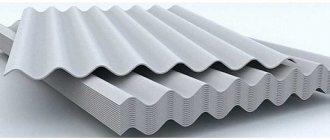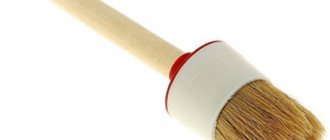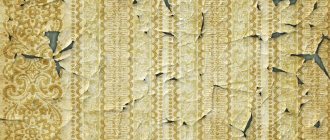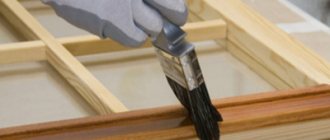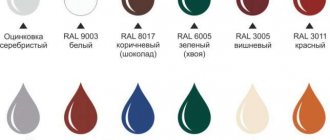Wooden fences require mandatory painting, regardless of what material they are made of. It could be a rail, a picket fence, a board. The tree is in any case susceptible to the influence of precipitation and insect pests.
If a wooden fence is not painted, then moisture, temperature changes and insects will destroy the wood within a few years. The fence will lose its attractive appearance, the wood will swell, and putrefactive processes will begin. Protective coatings significantly extend the service life of fences. But it is very important to choose them correctly.
When choosing products for painting a fence, you should pay attention to the following characteristics:
1. High moisture resistance.
2. UV resistance.
3. Protection from bacteria and germs.
4. Color fastness: paint must last for at least 5 years.
Paint selection
A wooden fence requires careful maintenance. You need to know what is the best way to paint a wooden fence so that it lasts for a long time. It should be noted that oil and enamel paints are immediately eliminated, due to the fact that they are easily exposed to the environment and are quickly destroyed. For this reason, the tree begins to rot.
The paints used to paint fences by owners of household plots and summer cottages include:
Alkyd
This paint is used most often because its price is the best compared to other types of paints. The composition includes such components as:
- polyhydric alcohols;
- acids;
- drying oil;
- oils;
- resin.
No matter how colorful and bright this paint is, it is not recommended for painting a fence. The reason is that under the influence of sunlight it begins to deteriorate. Thus, its protective function is weakened and the wood begins to rot and deteriorate. In addition, the substances that make up it themselves negatively affect the tree. But, if alkyd paint has already been used once, then the surface must be renewed every year.
Bright colors and a large selection of shades are not yet a reason to choose paint for a wooden fence Source derevyannyy.com
Acrylic
This paint is water-based and has a number of advantages when painting a fence, the main ones being frost resistance and resistance to high temperatures. In this case, the wooden fence will be protected by this coating for a long time. Before painting the fence, the material must first be coated with a primer. This way it will retain its color and even after a year the fence will look freshly painted.
Oily
This type of paint is used most often, but it has both advantages and disadvantages. The advantages include properties that create a protective ball on a wooden surface that does not allow moisture to pass through. In addition, it also protects the fence from the formation of mold and mildew. The downside is the strong smell and long drying time. Disadvantages include the ability to fade when exposed to sunlight.
Antiseptics
This paint comes in two types:
- covering;
- varnishing.
The use of these types of paint contributes to the long service life of the fence, as they protect the wood from pests, mold, bacteria and fungi. At the same time, the wood itself will look impressive.
This is how original a wooden fence in the shape of pencils can be Source rusability.ru
But the paint contains a large number of toxins that are harmful to the human body. Therefore, when working with antiseptics, precautions and safety precautions must be observed.
See also: Catalog of companies that specialize in the construction of fences and enclosures.
Oils and impregnations
There is not only paint for a wooden fence, which one better preserves the structure of the wood in the fence, but also different impregnations. They contain oils of natural origin. They may also contain other substances. The simplest impregnations include:
- transformer oil;
- engine oil.
They are purchased at a car dealership or directly at enterprises. Such impregnation has many advantages, namely:
- these oils are impregnated between the wood fibers, thereby providing it with protection;
- an impregnated fence looks like natural wood, but if you paint it, the paint will look richer;
- oils are easy to obtain.
Alkyd varnishes can be used to cover the fence. Thanks to them, the wood will have an original appearance and at the same time receive protection from the external environment. The only thing that upsets me is the cost of the varnish. But the end result will exceed all expectations.
Before painting, a wooden fence should be treated with special antiseptics Source sibwindows.ru
Review of popular manufacturers
Today, the Russian market offers several popular paint options for finishing wooden fences:
- Belinka Toplasur is thick and contains filters that protect the material from ultraviolet rays. After drying, it forms a beautiful glossy coating on the surface. Paint consumption is 1 liter per 8-10 m² of area.
- Holzlasur GEL is a translucent solution that can protect wood from negative external factors for a long time. The service life of such material is approximately 7 years. Like the paint described above, this solution contains ultraviolet filters. Depending on the type of boards, the material consumption is 1 liter per 6-11 m².
- Pinotex Ultra is characterized by deep penetration into the wood structure and protects it well from mold and rot. It looks especially impressive on planed boards, creating a smooth finish with a glossy sheen. This paint can only be used on wood that is not infected with pests and microorganisms.
- Tikkurila Valti Color is a Finnish-made paint that perfectly saturates boards and, after drying, creates a continuous, smooth film on the surface. This paint is easy to use and protects wood well from infection by fungi, bacteria and mold. Its consumption for sawn boards is 1 liter per 5-8 m², for planed boards - 1 liter per 8-12 m².
- Olymp Omicron-Maximum is a glazing antiseptic with a service life of at least 5 years. It contains components for biological and ultraviolet protection. It is quite economical in consumption. 1 liter of paint is enough to process 5-8 m² of sawn wood and 10-14 m² of planed wood.
Preparing for painting
If painting is applied to an old fence, then the remnants of the old coating are first removed from it. The new fence must go through the following stages of preparation:
- Using sandpaper, you need to sand each board, thus creating a smooth surface;
- a primer designed specifically for wood is applied
- using putty, all defects on the surface are smoothed out
- The dried surface is sanded and a finishing layer of putty is applied.
Only after the last layer of putty has completely dried can you begin painting. It is recommended to carry out such work only in warm sunny weather. Thanks to this, the protective coating will dry quickly.
They also grind the surface using a grinding machine; without its help, the work will take a long time. Source ttdi.co.uk
In this case, it is best to coat the new fence with paint before installation begins. This way it will be possible to paint the end sides of the board. This way the fence will be completely protected from moisture.
Applying varnish
Applying varnish to fence boards before installation
For wooden fences, alkyd varnish is more often used, having won superiority among others due to its high quality indicators. But from an environmental point of view, acrylic varnishes are safer, although they are more often used for interior work. When giving preference to nitro varnishes, you should remember that they must be applied strictly in a respirator.
The varnish is applied with a natural fiber brush. The application process begins at the edge of the fence and is rubbed in thoroughly to form a thin layer. It will dry quickly and absorb well. The next layer of varnish can be applied only the next day.
Varnish, while adding shine to the wooden material, does not hide its structure under its layers. And thanks to the wide selection of shades, you can choose a lighter or, conversely, darker tone.
Painting a decorative concrete fence
The main reasons that force a concrete fence to be painted are:
- coating the concrete surface with paint protects it from destruction;
- since such a fence is gray in color, it causes despondency in the views of people around, and a painted one attracts the eye and pleases the eye;
- By painting the fence, you can complement the elements of your personal plot.
Alternatively, the best fence paint should look harmonious with nature. In such cases, choose the following colors:
- green - flowers in flower beds look very impressive against its background;
- brown - emphasizes or complements the elements of the house;
- blue - will look great if there are artificial ponds on the site.
In such cases, you can paint a decorative concrete fence Source warszawa.lento.pl
Before painting a concrete fence, it is also necessary to carry out preparatory work. To do this, be sure to cover the surface with a primer and only then begin painting. Painting a decorative fence is more difficult than painting a wooden one. The problem lies in the relief of its surface. It is best to paint such a fence with a brush or spray gun. Moreover, in the second option the painting will be of better quality.
Combined
They have a thick section, so they are much less likely to be blown over by the wind. They look solid. Most often used when there is a need to hide plants from external influences - for example, from animals. Leaves room for creativity - for example, using wood carvings, modifying the shape of the tops of the boards (sharp, rounded), using rope as a tie.
More homemade products: How to clean a silver chain at home - life hacks with photos
However, it must be taken into account that the material is highly susceptible to deterioration under the influence of biological (insects) and weather factors (precipitation, high humidity), so it will need to be treated with a special composition.
Woven from branches On one side complements the metal lattice An unusual solution made with your own hands
It can be made of either wood or metal profile. Essentially, these are thin and relatively wide strips fixed in the ground and connected to each other by a pair of transverse ties. You can find a sufficient number of installation schemes for picket fence elements, including those using decorative elements.
Lovers of wooden fences do not stop at the traditional version of a vertical picket fence on wooden posts. This method, although it has a right to life, is being replaced by more modern and beautiful designs. Let's look at a few of them, moving from simple to complex:
When making a wooden fence with your own hands, pay attention to important details that will help you ideally bring your dream to life:
Painting a metal fence
A metal fence, like any other, needs painting. Primarily to prevent rusting. But before you start the main work, you need to prepare. This stage is the most important when painting metal fence elements.
Old paint, rust and scale are removed from metal elements using an oxy-acetylene torch or blowtorch. At this stage, purification occurs due to the peeling off of excess, as a result of the difference between the expansion coefficients of the metal and combustion products. In addition, you can use special solvents that need to be applied to the surface, left for some time and washed off.
Metal, although a strong material, also needs protection from corrosion Source anovichkov.msk.ru
When covering metal with paint, you need to remember that for these purposes you need to choose a special coloring agent intended only for metal surfaces:
- Anti-corrosion paint Stancolac.
- Acrylic paints for metal. Here we can distinguish several types of names: Import, Mat, Yarimat, Hammerton, Biferro.
In addition, before starting coating, the metal must be treated with sandpaper to remove dirt and traces of rust. Before painting, the surface is treated with a primer. This ensures good bonding of the material with the coating.
If the fences are made of non-ferrous metal, a varnish coating is used instead of paint.
How to choose the right primer for painting
The function of the primer is to protect the surface of the fence from negative weather factors and corrosion processes. The material also makes paint application more even and dense. Prime the fence before painting.
Primers used:
- tread – forming a dense film with high resistance to mechanical damage and moisture;
- insulating – high-strength, moisture-proof;
- passivating – resistant to temperature fluctuations, providing an excellent anti-corrosion effect;
- phosphating – forming a phosphate film, increasing strength, resistance to corrosion and wear, used for any type of metal, but only after cleaning the surface.
To paint a metal fence, primers are mainly used that are effective against corrosion and prevent rust from forming.
